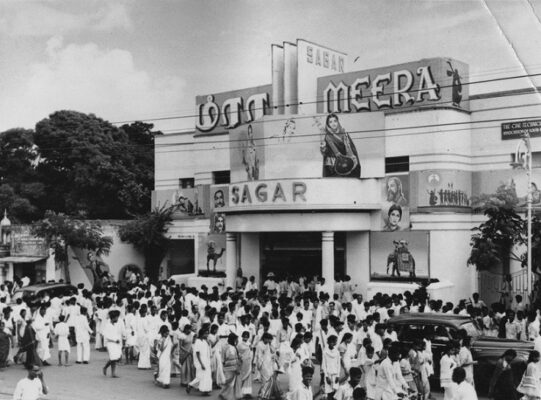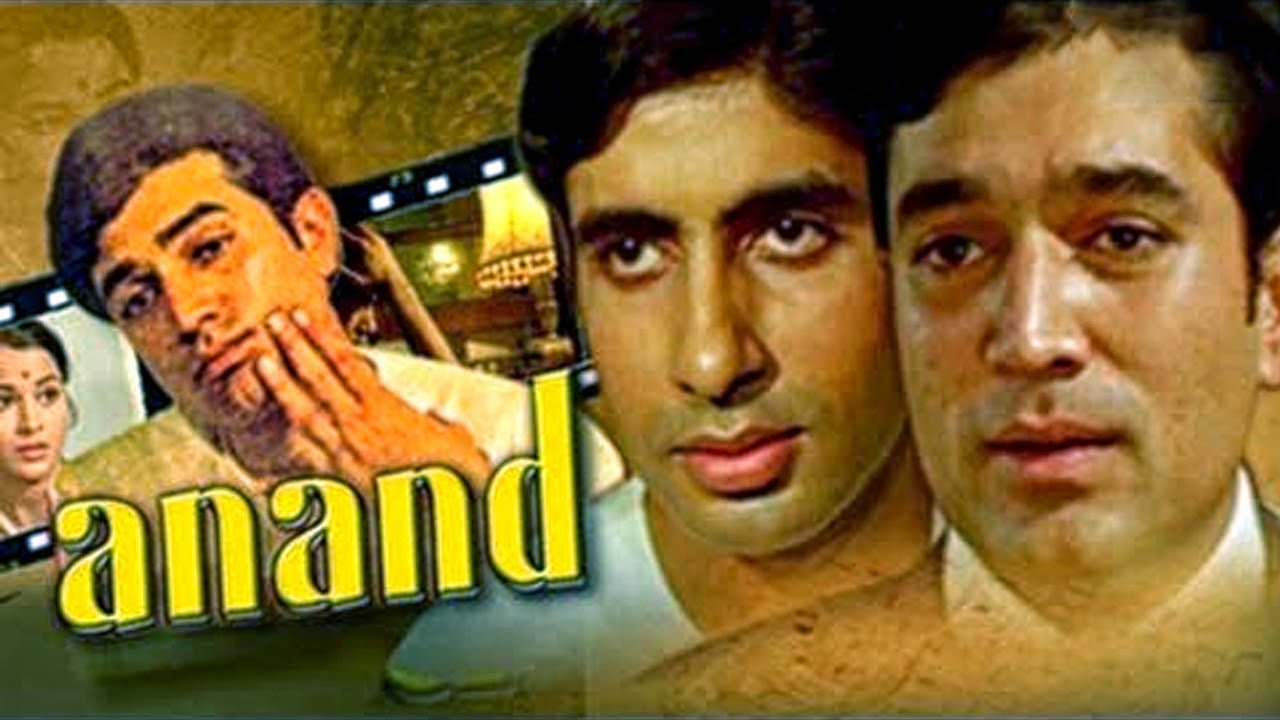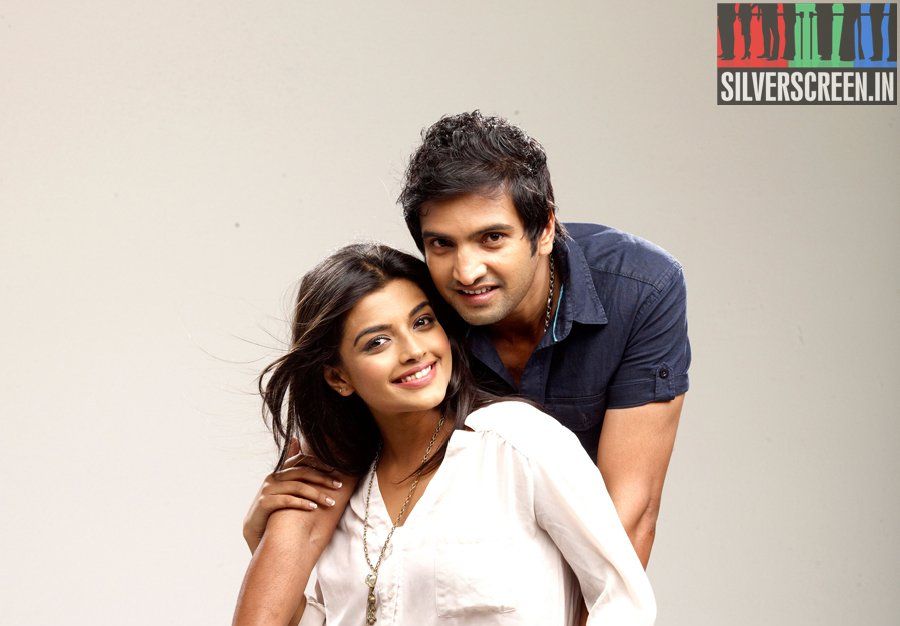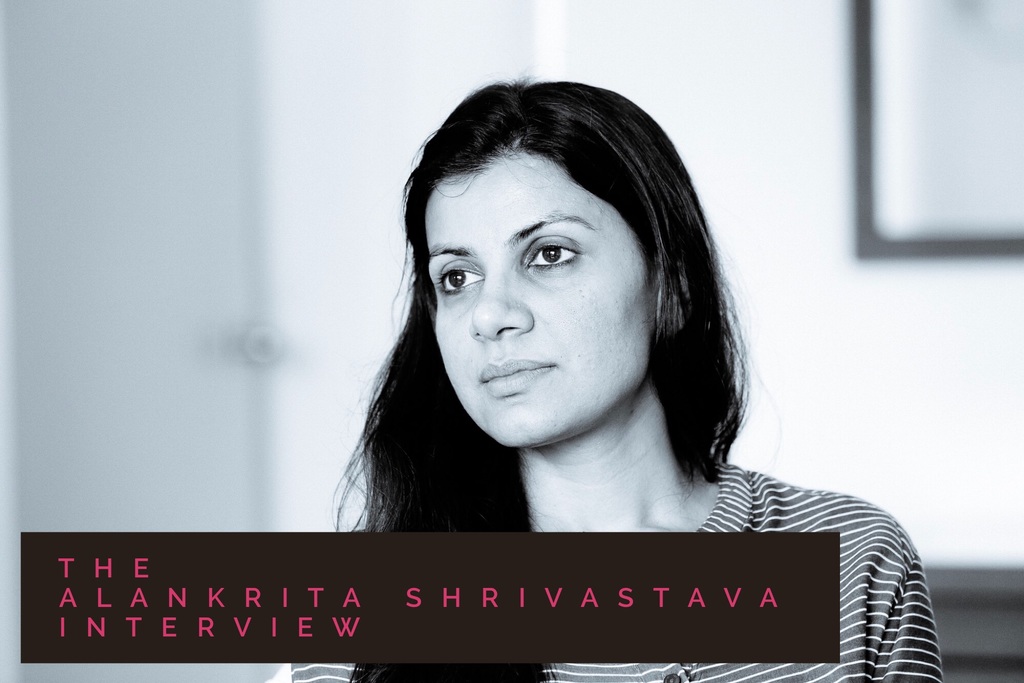Meera, the 1945 talkie, had all elements of potboiler — even outside the script. A pretty heroine who had run away from home. A go-getter who wanted to make his wife an icon in contemporary Indian history, as producer. An American director Ellis Roderick Dungan, who was barred entry in most shooting spots — temples — because he was a Christian. Story and scriptwriter Kalki Krishnamurthy, who as a cinema reviewer criticised Dungan for showing obscenity in his movies, but plumped for him when he needed a director. And finally, a hazy memory from the 16th Century of a Rajput princess who became one with Lord Krishna. Together, they produced a hit the public refuse to forget — Meera.
Meera was released on Deepavali of 1945 and a human flood inundated theatres. Poet Sarojini Naidu introduced Subbulakshmi to the audience, “You will be proud that India in this generation has produced so supreme an artist.” The Bhakti movement as a distinct devotional tendency that emerged in medieval Hinduism reached its pinnacle in the 16th Century. The movement was inspired mainly by poet-saints. More than the devotion, it provided an individual-focussed substitute trail to spirituality, regardless of caste or gender. Meerabai was a sparkling example of this movement. Her story was also rich with cinematic elements — Meera faced opposition from family throughout her married life because they did not understand her piety.
Indian movie shrugged off its silence and started talking in 1931. And, in no time, the dialogues morphed into songs. And, talkies became musicals. Gramophones (needing no electricity to play) popularised these musicals in the Presidency. Meera, like many other contemporary movies, was to have 21 songs, sung by the heroine and her step-daughter.
The axle of the film’s wheel was the heroine — petite Madurai Shanmughavadivu Subbulakshmi, with the voice of a nightingale. It was a time when women of the devadasi community had had enough of dancing before gods and being taken advantage of by moneyed men. Some such as Balasaraswathi were becoming dancers of repute, and others, singers and instrumentalists. The world of cinema beckoned too. After the Madras Devadasi (Prevention of Dedication) Act was passed in 1947, very few except the elderly were still attached to temples.
But, Shanmughavadivu was old-fashioned. She migrated to Madras with Subbulakshmi and let her sing in concerts and act in a couple of movies, but felt there wasn’t enough money in either music or cinema. When her mother tried to settle her with a rich Chettiar, MS ran away from her Madurai home and landed again in Madras, this time under the protection of Sadasivam (already married with two children). She explained her predicament and Sadasivam decided to deal with the situation, no matter how scandalous it turned out. For, in MS, Sadasivam saw his future too.
MS never went back to her mother. She had in a way erased her lineage and her past. Shanmughavadivu died lonely and uncared for in Madurai. Much later, RK Narayan would write a short story ‘Selvi’ on how this story could or should have panned out.
When his first wife Abithakuchalambal died, Sadasivam and MS married in Thiruneermalai. She started wearing the nine-yard Madisaar that orthodox Brahmin women did, and, it is said that at least one religious head objected to it.
Subbulakshmi soon became a leading Carnatic singer and brought to her chosen profession a dignity. With her voice gliding effortlessly to pitches other singers could not even dream of, she was at once an object of envy and admiration.
With Sadasivam guiding her at every step, she was never far from the headlines. The Music Academy banned her for 10 years for attempting to sing Tamil instead of Telugu songs during the Tamilisai movement. So, Sadasivam started his Mylapore Sangeetha Sabha (MSS) and had MSS sing for MSS.
***

Dungan was visiting a friend, and stayed back, perhaps, tempted by the boundless possibility cinema offered in India. He stayed at a hotel on Mount Road with his pet — a lion cub. Dungan used to tie it to a tree on the hotel premises when shooting. Once, it escaped and sauntered on to Mount Road; the police almost shot it, before someone reminded them it was the Dorai’s cub.
Dungan had been employed by the British-run Madras Government to shoot publicity films during World War II but got special permission to direct Meera when he realised the potential richness of a religious movie with miracles being shown using trick shots. During Meera, producer Sadasivam decided to shoot on location, including in Dwarka and Vrindavan. The director was not allowed inside, being a non-Hindu, and so, Sadasivam dressed him up like a Kashmiri Pandit. Post-shooting, the news leaked, and the temple apparently went through a ‘purification’ ceremony.
When Dungan directed his first Tamil movie Sati Leelavathi, he had been particularly impressed by a handsome actor who sustained himself by doing small roles. In Meera, that good-looking actor, MG Ramachandran, was given the role of a courtier, Jayamal — his face was hidden by a silvery beard.
Much later, both MS Subbulakshmi and Ramachandran would be bestowed with the highest civilian awards in India — the Bharat Ratna, making Meera the only movie ever to have two Bharat Ratna awardees acting in it. The team of Meera was allowed to shoot inside the palace and gardens of Udaipur palace. The royal palanquin and elephants were lent, and the palace staff acted in the movie as well. So, Dungan expanded the script to make full use of these facilities. This segment differentiated the movie from its contemporary talkies, thanks to the richness of the decor and props.
Dungan would shoot scenes and then ask music director SV Venkataraman to compose the background music. The music director later went on record that he almost went insane during the filming.
Meera was released across Madras Presidency to thunderous applause, and Sadasivam ambitiously planned a Hindi version, Mirabai. Most of the old shots were dubbed, with only the MS portions being re-shot. There would be a marked difference in her face even in subsequent shots because of the two-year gap.
Mirabai had a spectacular premiere in 1947, with notables such as Jawaharlal Nehru, the Mountbattens and C Rajagopalachari in attendance. But, an audience waiting for more movies starring MS was disappointed. After having played Meera, few roles suited her, and there were other new actresses in town. MS could not have possibly competed with them, but no one knew it at that time, including, perhaps, MS herself.
Was the deliberate ending of her film career planned by Sadasivam to let the memory of her serene, saintly face linger in public memory? No one knows. But, if any gamble played off, it was this. Even decades later, her saintly persona in her last movie stays alive in public memory. And, like Meera, MS lived with the ‘conscious dignity’ of a saint for the rest of her life.

Meera touched many lives. While the hero of the film Nagaiah has a statue in Panagal Park, Chennai, the heroine MS has at the entrance of the temple town Tirupati, welcoming all pilgrims. And, the junior actor who played Jayamal has 25,000 statues across Tamil-speaking regions, at last count.
Image (topmost) courtesy: Scroll.in and Film News Anandan
Venkatesh Ramakrishnan is a bilingual novelist and historian. He is the author of ‘Kaviri Maindan’ the sequel to Kalki’s ‘Ponniyin Selvan’ and a novel on Delhi Sultanate’s invasion of South India called ‘Gods, Kings and Slaves’. He specialises in the history of Madras city.



